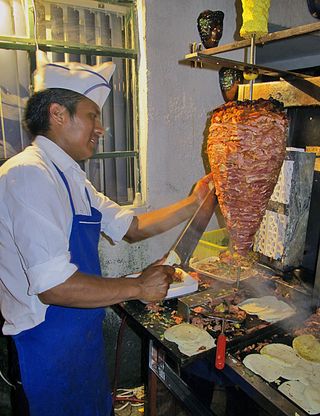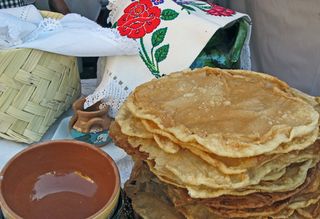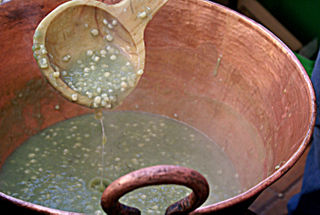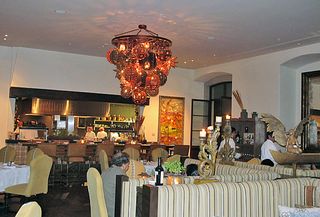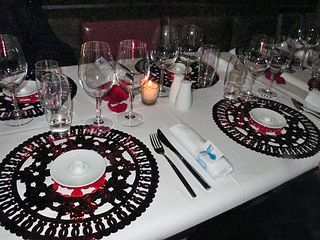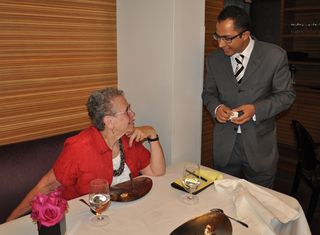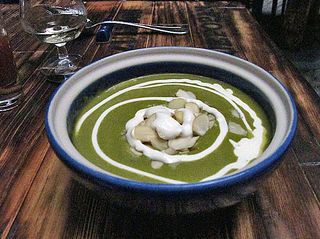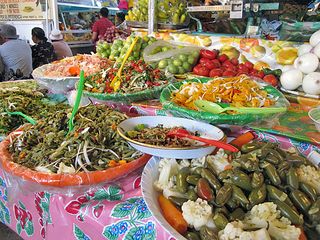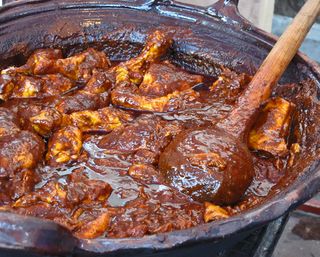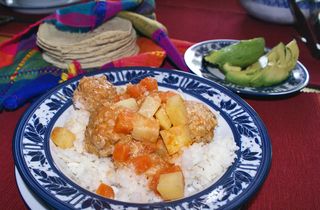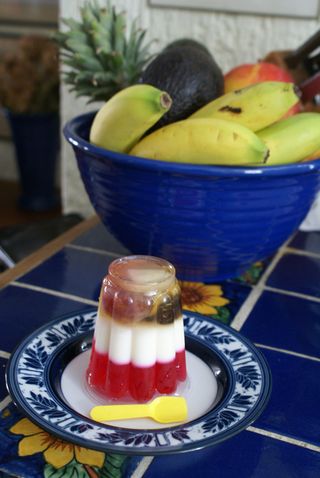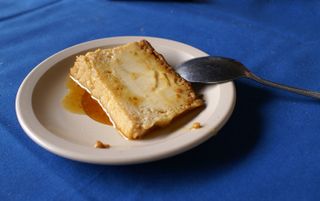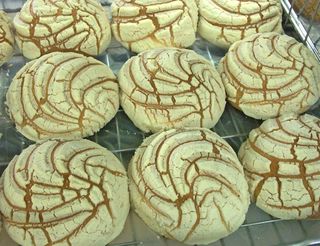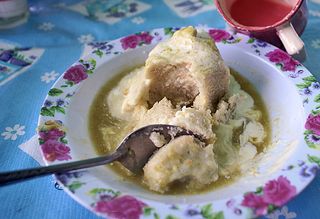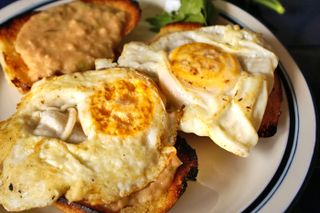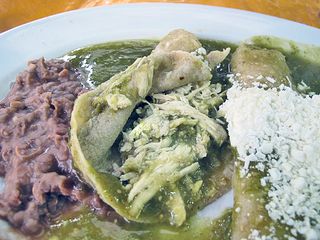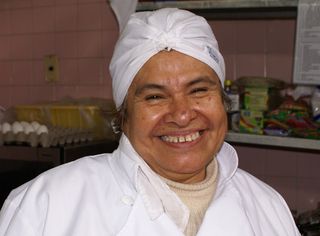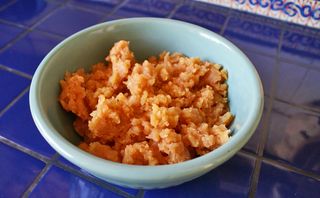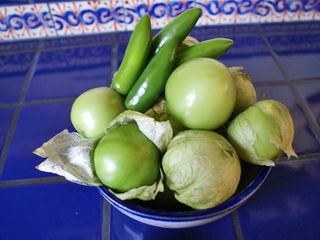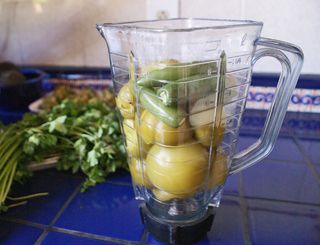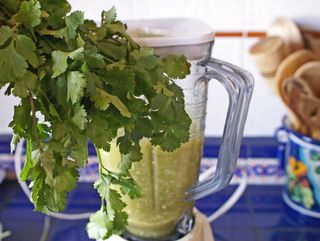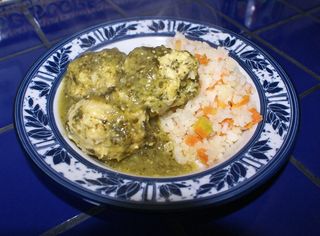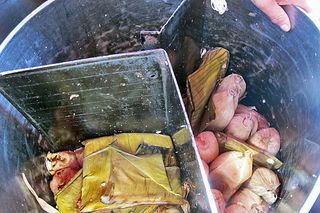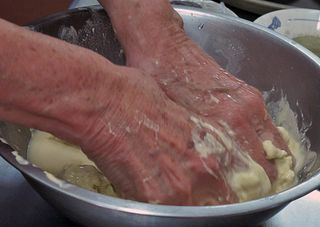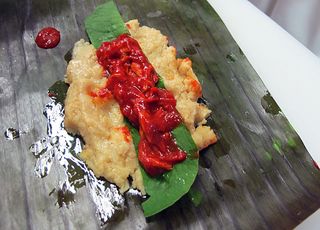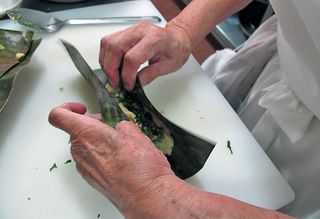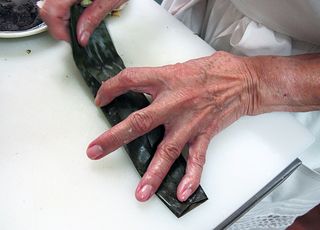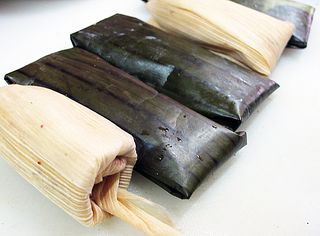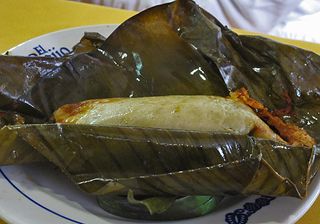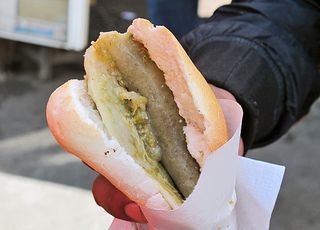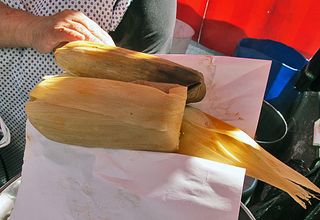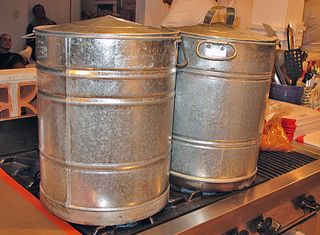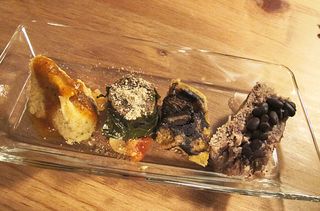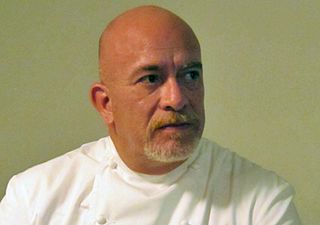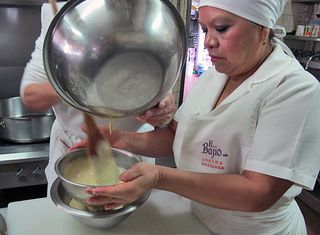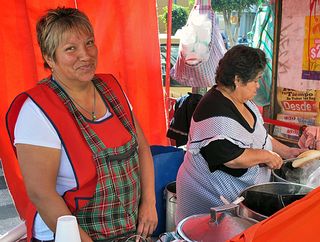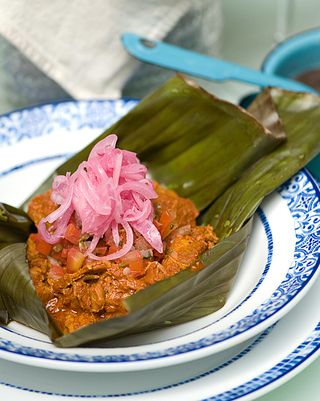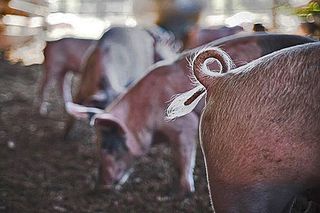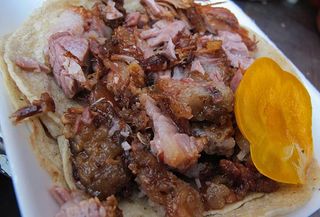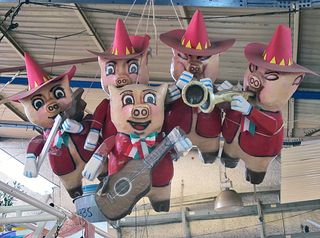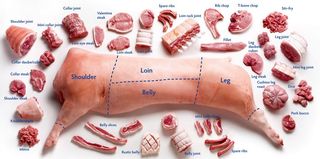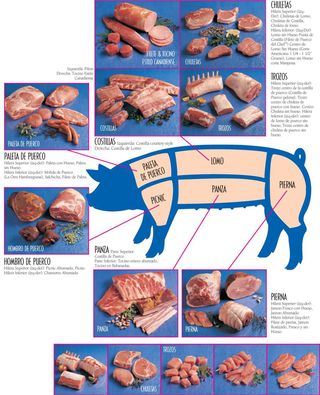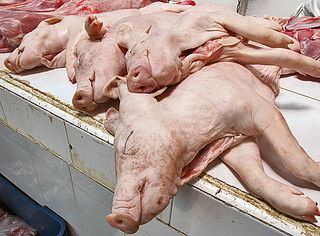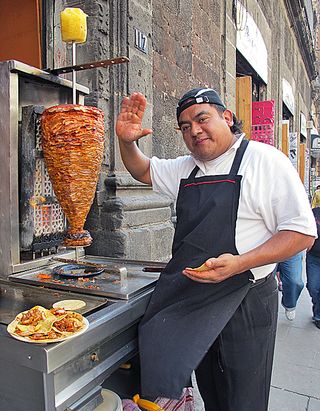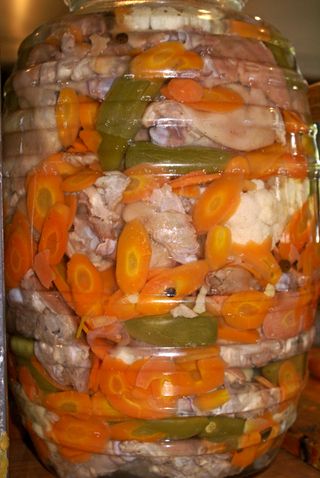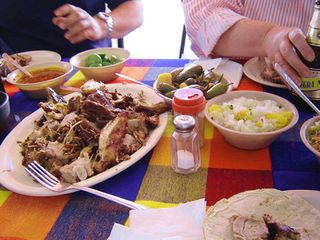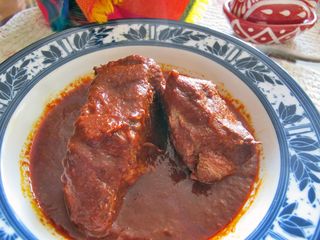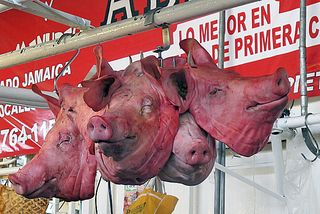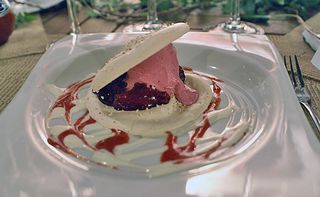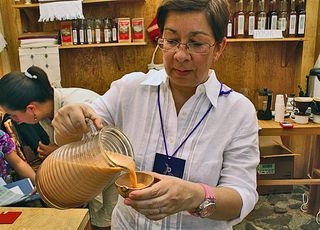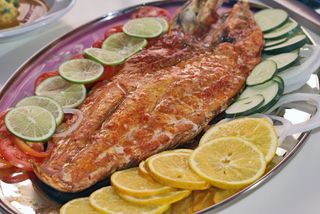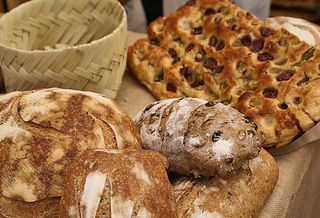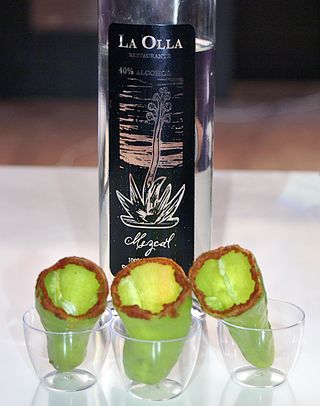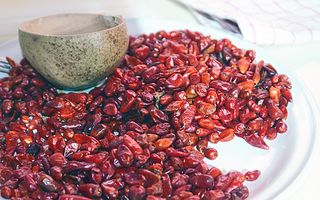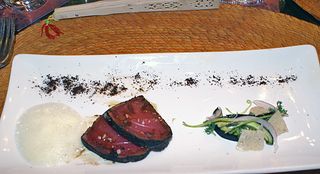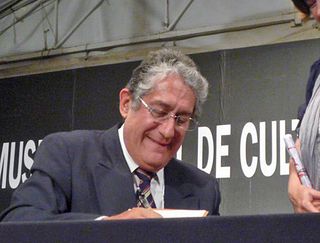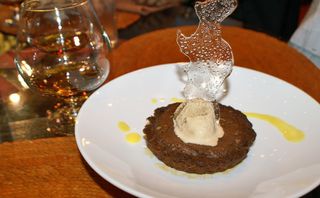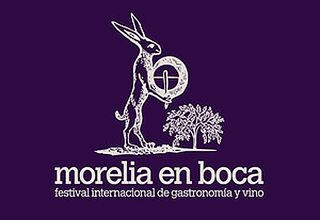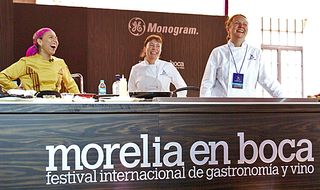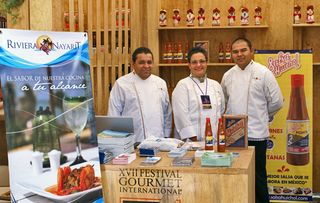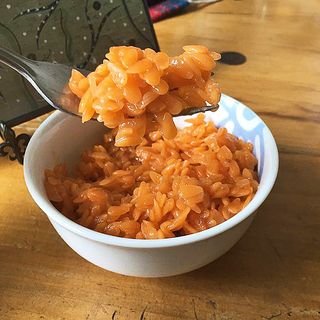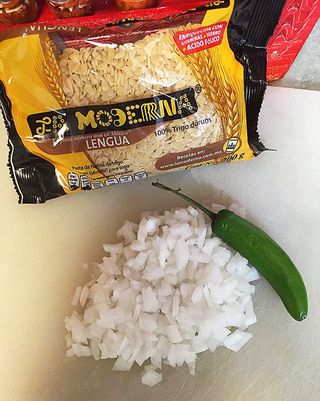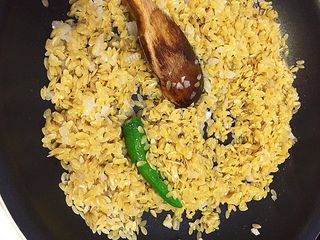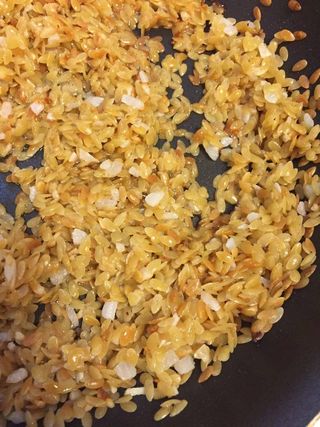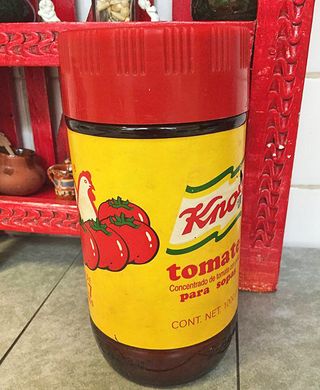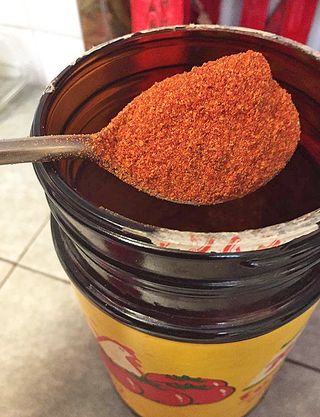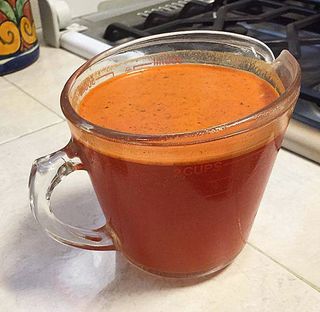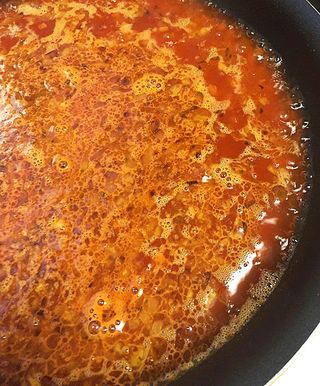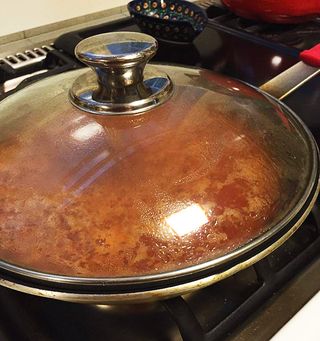
The chile poblano is one of the most commonly used fresh chiles in Mexico's kitchen. A very large, fleshy chile, it can measure as much as seven or eight inches long. The stem end is much wider than the point, and the color ranges from dark green to almost black-green. Shopping tip: if you buy chiles poblano that are flat on all sides, they will roast more quickly than if they are deeply creased in spots. The flat sides will evenly touch the roasting surface.
The chile poblano is commonly used for preparing main dishes such as chiles rellenos, including the seasonal and festive chiles en nogada. It is also used for making rajas de chile poblano con crema (strips of chile poblano with cream), a marvelously flavorful vegetable side dish. All photos by Mexico Cooks! unless otherwise noted.

To prepare chiles poblano for use in any recipe, wash and roast them. Don't try to use them with the peel on; the peels will be as tough as trying to chew through plastic. Mexico Cooks! uses a cast iron comal (griddle) placed over a high flame to roast as many as four to six chiles at a time. Other cooks prefer to roast these chiles one at a time over an open flame, or on a broiler pan in a slightly open oven. No matter which roasting method you use, the roasted chiles should look like the ones in the above photo. Photo courtesy Maura Hernández.
Once the chiles are roasted, put them in a plastic bag, twist it shut, and allow the chiles to 'sweat' for 10 to 15 minutes. You'll easily be able to remove the blackened peels. It's best not to rinse them–or rinse them only a little–as rinsing removes a good bit of the delicious chile poblano flavor.

After you have peeled your roasted chiles, they will look like this. If just a bit of toasted peel sticks to the chile, it will simply add another layer of flavor to your dish. Click on the photo to enlarge and better see the remaining blackened bits of peel.
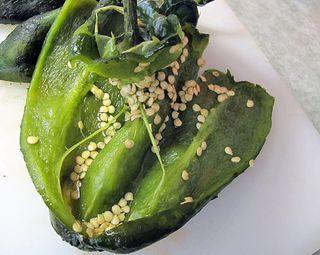
Make a slit down the full length of each chile and cut off its stem end. Remove the seeds by brushing them into a trash receptacle.
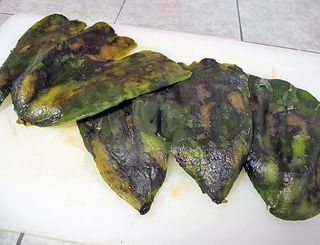
Chiles poblano, roasted, peeled, and laid flat on a cutting board. The next step is to slice them into strips–rajas, in Spanish.
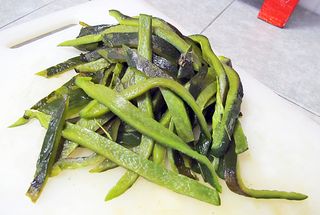
Rajas, ready to prepare and serve. For this meal, Mexico Cooks! used three large chiles to prepare a side dish for two people.
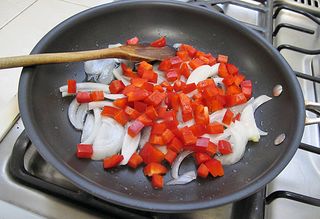
The ingredients include half a white onion, sliced very thin, and about one-third of a large sweet red pepper, diced. Sauté in hot oil until soft and translucent. Mexican cooks normally use fresh corn kernels in this recipe; I happened to have part of a sweet red pepper that needed to be cooked, so I used that instead.

Peppers and onions, ready for the addition of the chile strips!

Continue to sauté the vegetables until the chiles are soft. Because the chile strips are already roasted, the sauté process will not take long. You do not want your rajas to be over-cooked; they should still be bright green at the end of cooking.
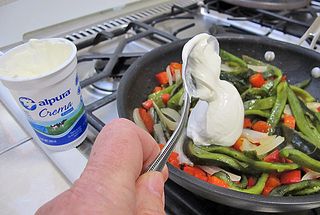
Add about half a cup of crema para la mesa (Mexican table cream or creme fraiche–NOT sour cream) to the vegetable mix. Stir until well incorporated.
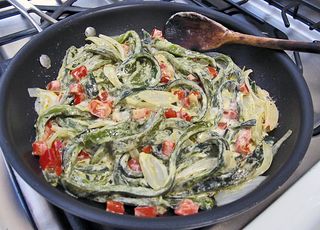
The cream will become a thick sauce for the vegetables. Salt to taste. The chile poblano is generally quite mild and flavorful, but once in a while you will come across one that is surprisingly spicy. There's no way to tell by looking at them whether they are mild or hot, and either way they're delicious and not overly 'hot'.

Mexico Cooks! served the rajas de chile poblano con crema alongside strips of a very large chicken breast, lightly dusted with salted flour and sautéed in olive oil seasoned with a smashed clove of garlic. This chicken breast half, which weighed nearly a pound, made ten strips and was plenty for the two of us for our main meal of the day. This simple meal was easy and delicious.
Provecho! (Good eating!)
Looking for a tailored-to-your-interests specialized tour in Mexico? Click here: Tours.

